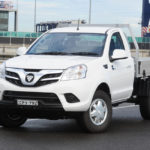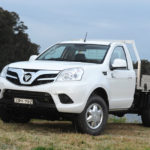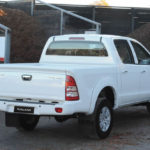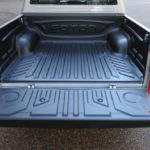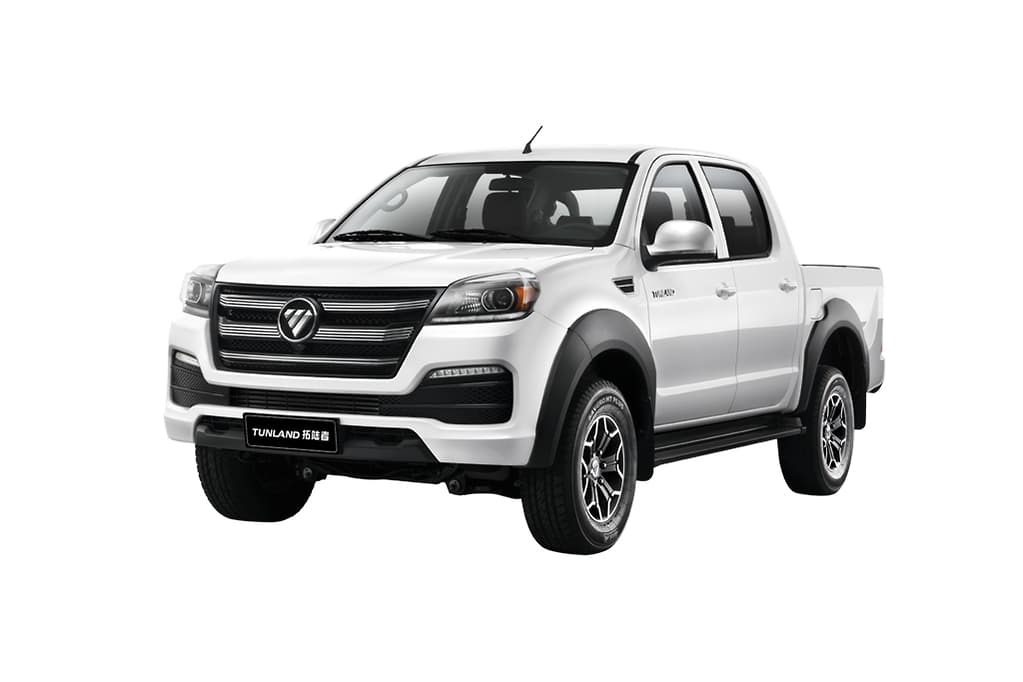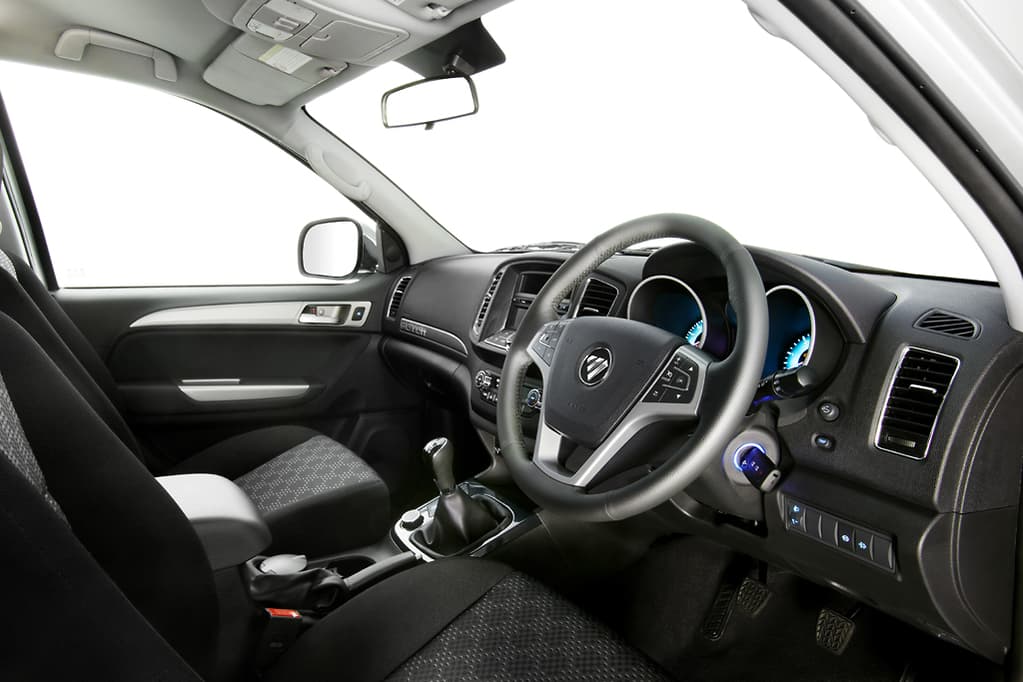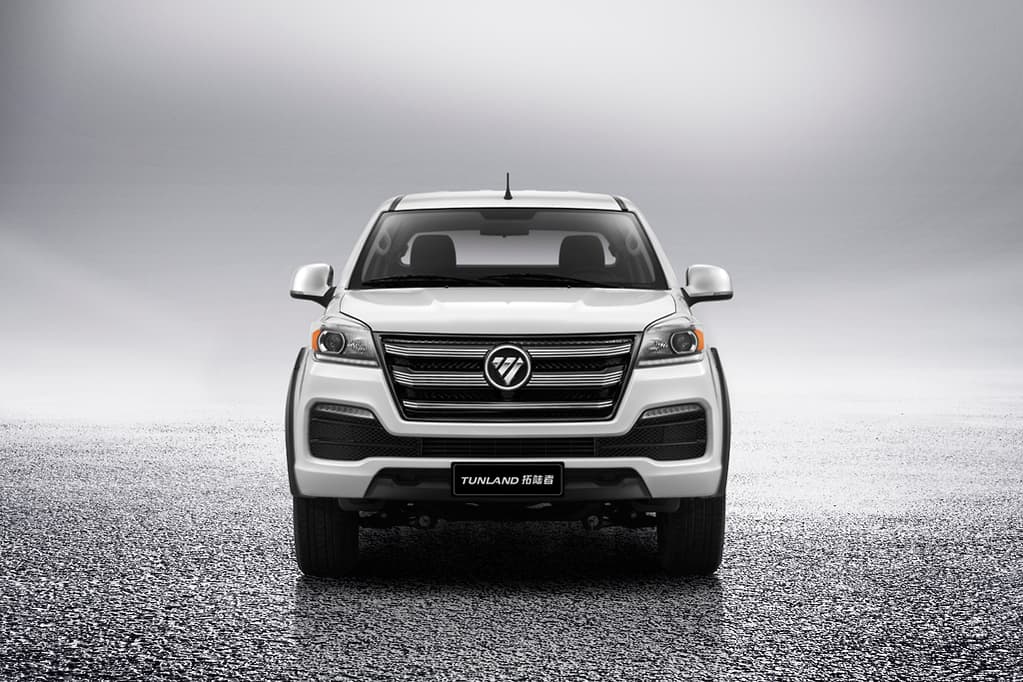
But, according to Chinese brand, in 2021, an all-new Australian-developed diesel 4×4 dual-cab will deliver top-tier safety and technology.
Foton Motor Australia has released an updated 2019 Foton Tunland ute with fresh external style, but it will be replaced in the second quarter of 2021 by an all-new vehicle with cutting-edge safety, technology, and Australian development involvement.
The MY19 Foton Tunland (seen above) has new headlights and daytime running lights, as well as a redesigned front bumper and grille and chunkier wheel-arch flares, which will be available in June.
The single Tunland dual-cab 4×4 diesel automatic type costs $34,990 drive-away (up $1000), or $33,990 if you have an ABN.
The new SsangYong Musso ELX ($35,990 drive-away) and LDV T60 Luxe ($36,831 drive-away), according to Foton, are upstream diesel/auto 4×4 twin-cabs.
It also lists the dual-cab Mitsubishi Triton GLX+ diesel auto as a key competitor, priced at $42,490 drive-away – but not the market’s cheapest crew-cab diesels, such as the Great Wall Steed (from $30,990), Mahindra Pik-Up (from $29,990), and JMC Vigus, which was priced from $27,990 drive-away before it was discontinued.
There have been no modifications.
The MY19 Foton Tunland has a 130kW/365Nm 2.8-litre four-cylinder Cummins ISF turbo-diesel, ZF six-speed automated gearbox, Borg Warner dual-range transfer case, and Dana limited-slip rear differential as its main attractions.
There are no upgrades for the vehicle’s 3000kg towing capacity, 950kg payload, three-year/100,000km warranty, or basic safety features, which include Bosch stability control and anti-skid brakes, twin front airbags, reversing camera, and three-star ANCAP safety certification (2012).
As a result, Foton Motor Australia (FMA), the factory-owned distributor, has modest sales goals for the Foton Tunland in 2019, expecting to sell just 250 units and extend its national dealer network from 22 to 30 shops.
A new model is in the works.
That will all change by mid-2021, when Foton hopes to have 40 Australian dealers ready for the debut of the next-generation Foton Tunland, which will be bigger and subject to an Australian development testing programme beginning later this year, according to FMA general manager Robert Zhang.
The revamped Foton Tunland, according to Zhang, will need to tick all the appropriate boxes to compete in Australia’s vast and heavily contested pick-up market, including a five-star ANCAP safety certification and a five-year guarantee.
“You have to win everything in this market; you can’t afford to sacrifice any safety features,” he stated.
“According to local custom, the next-generation [Tunland warranty] might be extended to four or five years.” We must surely prepare for the future generation… Make it as safe as possible [to earn a five-star] ANCAP rating].
“This market is quite competitive. You don’t accomplish anything if you can’t do good.”
A single-cab variant, at least in Australia, where a two-seat vehicle was temporarily available alongside the four-door, may be absent from the next-generation Foton Tunland lineup.
“We brought in a single-cab two years ago, but cost-effectiveness is a huge issue — no [profit] margins. The single-cabs may not be brought in. The factory has yet to make a decision on this “Zhang stated.
Trucks are expected to lead the push.
In fact, Foton intends to use the profits from its fledgling heavy truck business to subsidise its entry into Australia’s fiercely competitive ute market, which is the world’s fourth largest.
Speaking at the unveiling of a line of new Foton heavy trucks last week, Zhang said the company’s objective is for light commercial vehicles like the Tunland to contribute for barely 35 per cent of sales in Australia and for new Foton trucks to constitute 65 per cent, rather than the other way round.
In 2019, FMA predicts 750 overall sales, including 500 trucks and 250 utes, with incremental yearly growth of 10% for the next five years.
Foton plans to utilise Australia’s roads and market as a testbed for its next ute before releasing it in North America and Europe, according to Zhang.
He described Australia and New Zealand as “very difficult markets.”
“We are not anticipating a large volume, but we need this market to improve product quality, and the firm will eventually expand to the United States and Europe.”
“As a test bed, we’ll launch in Australia and New Zealand to evaluate how excellent our product is, what we can do, and how we can improve.”
“This is crucial information. We’re going to remain here. We don’t expect a lot of business, but we need to be in this market.”
Big business
Foton, which was founded in 1996, is China’s largest truck manufacturer, with 40,000 employees, over 300,000 domestic sales, and 60,000 exports to 110 countries, including Russia, Brazil, India, South Africa, Thailand, and Indonesia.
However, considering Australia’s proximity to China in terms of geography and timezone, as well as its parallels to other western markets, it makes sense for Foton to develop cars here in part.
Foton is testing utes and trucks in the Northern Territory, Western Australia, and South Australia, and will begin testing its new Tunland ute in August.
“We get frequent input from dealerships, we have consumer surveys, and whatever difficulties and feedback we get, we transmit to R&D in China so they can figure out how to improve the car,” Zhang explained.
“We need to test the market and figure out what customers want and what the market expects.” We have to live up to the expectations; otherwise, rushing makes no sense.
“Every quarter, our product development and R&D folks come to perform the study and give us feedback and have a chat with us.” They travel around the country in a circle.”
Isuzu UTE, which sold more than 18,500 utes in Australia last year, when the D-MAX was the country’s fifth-best-selling 4×4 ute, Zhang said Foton could learn a lot from them.
He stated, “Japanese manufacturers have been in the market for a long time.”
“They are indeed an inspiration and a benchmark for us. For us, [Isuzu] isn’t really a direct rival. We still have a long way to go, but there is a model to follow.”

